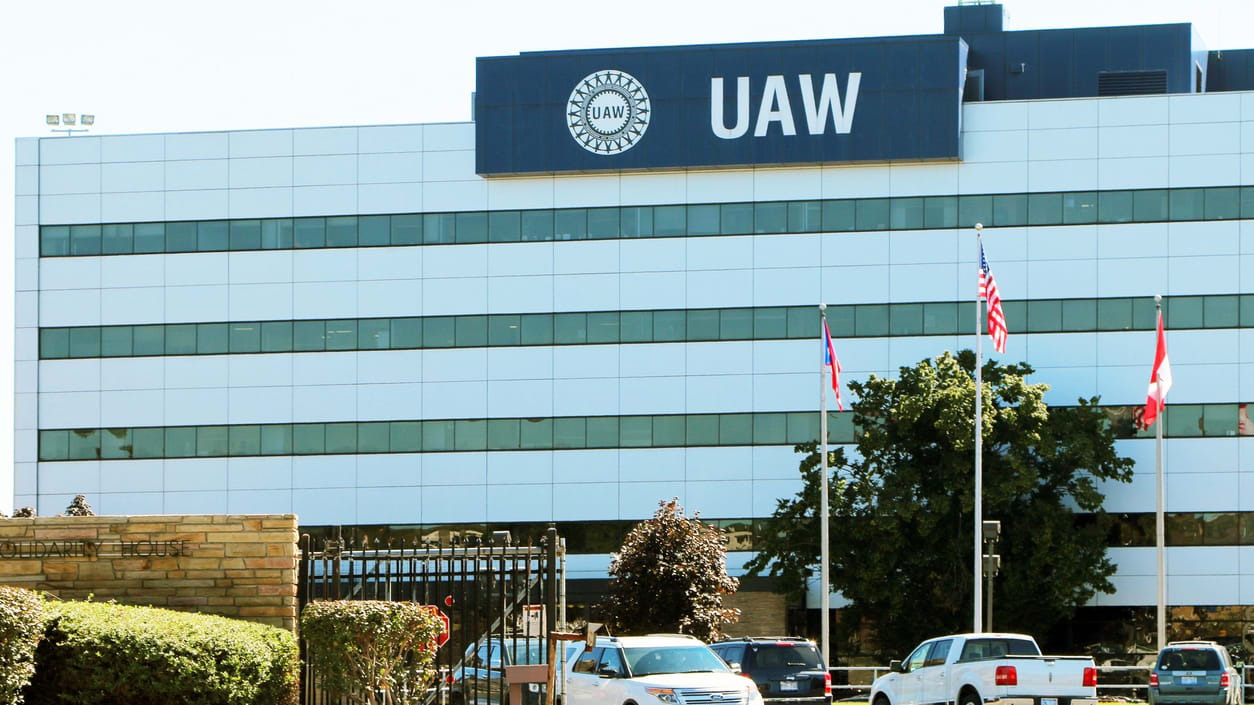A limited strike has begun against General Motors (GM), Ford Motor and Stellantis, which owns Chrysler, after the automakers and United Auto Workers (UAW) failed to reach a deal on a new four-year contract. The strike started at three plants but could have a domino effect, particularly if it becomes more widespread and prolonged. We've gathered articles on the news from SHRM Online and other media outlets.
Plants with Strikes
Workers at three Midwest auto plants—a General Motors assembly plant in Wentzville, Mo., a Ford plant in Wayne, Mich., and a Stellantis plant in Toledo, Ohio—were the first to walk off the job. For now, that means the strike involves about 12,700 workers at the three companies. The corporations have approximately 146,000 UAW members. Additional strike locations could follow, depending on how bargaining with the companies proceeds.
The strike occurs as automakers have spent billions on electric vehicle and battery production, expenditures that might make a sharp rise in labor costs more difficult. Under the companies' old contract, hourly labor costs average $65, including benefits, compared with Tesla's $45. The UAW has said that labor accounts for less than 5 percent of the costs per vehicle.
(NPR and The Wall Street Journal)
‘Stand Up Strike’
The decision to start the strike on a limited basis is intended to give UAW negotiators leverage in the talks and to keep the manufacturers off balance. The union referred to its targeted strike as a "Stand Up Strike." Striking at even a handful of plants could disrupt the automakers' production while ensuring that many UAW members continue working and earning paychecks.
The strike against the three companies is the first time the UAW has gone on strike against all three of the automakers simultaneously.
(The New York Times and CNN)
Domino Effect
It might not take much to virtually shut down the companies' output. The corporations operate a network of plants that depend on getting parts from different facilities. Slowing or stopping the production of a few engine or transmission plants at each company could be as effective at stopping operations as a full strike, according to industry experts.
However, the UAW's selection of plants for now will let the other assembly plants continue to manufacture vehicles if workers at those plants stay on the job. None of the vehicles built at the three plants where the strikes are taking place are top sellers.
Teamsters Won’t Deliver Vehicles
Truck drivers who belong to the Teamsters won't deliver vehicles for GM, Ford or Stellantis as a result of the strike. "We are 100 percent supportive of UAW workers" and UAW President Shawn Fain, said Kevin Moore, president of Teamsters Local 299 in Detroit. The local union represents 5,000 members and most freight car haulers. "Our Teamsters will not cross strike lines," Moore said.
UAW Goals
The UAW began the week asking for a 46 percent pay raise over four years before reducing that to a demand for a 36 percent pay raise, according to Garret Nelson, an automotive analyst for CFRA Research in the Washington, D.C., metropolitan area. Other union goals have included the adoption of a 32-hour workweek, a return to traditional pensions and an end to a two-tier wage system that pays new hires much less than workers with long tenures. In addition, the UAW has sought retiree medical benefits, cost-of-living allowances tied to inflation, more paid time off and limiting the use of temporary employees.
Another bargaining issue is whether the union can represent employees in new plants in the U.S. that are joint ventures with Asian companies to make electric vehicles' batteries. Because electric vehicles require fewer parts and less labor to build than gasoline-powered vehicles, a transition to EVs may lead to closure of plants making engine parts for traditional cars.
(CBS News, Fortune, SHRM Online and The Washington Post)
GM’s Latest Offer
On Sept. 14, GM said its latest offer included a 20 percent wage boost over four years and cost-of-living adjustments for workers with long tenure. GM also said it would let new hires reach the top wage after four years on the job. "We put forward a compelling and unprecedented offer," said GM Chief Executive Mary T. Barra. Ford and Stellantis also made new proposals to the union before the old contract expired but did not release details.
What If the Strike Spreads and Is Long?
If the strike spreads and is prolonged, new vehicles could become scarcer, which might result in higher car prices and hinder efforts to reduce inflation. While a 40-day strike against GM in 2019 contributed to a single-quarter recession in Michigan, a widespread and long strike against GM, Ford and Stellantis might result in more lasting damage. Inventories of domestic cars are low—less than a quarter of what they were in September 2019. A prolonged and widespread strike also could affect the automotive supply chain. The automakers' suppliers—businesses that make brakes, headlights and catalytic converters—might be hurt enough to result in job cuts.
(The New York Times and NBC News)




